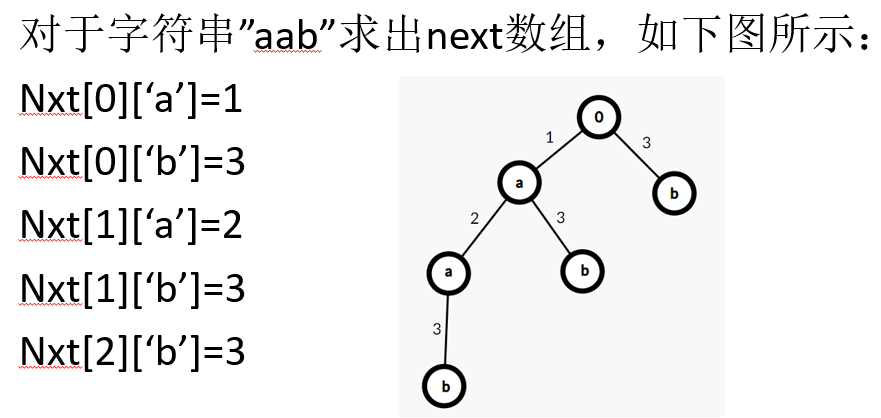Description
给你一个字符串,有它有多少个本质不同的子序列
Input
第一行给出字符串长度,小于等于100
第二行给出这个字符串
Output
如题
Sample Input
3
aab
Sample Output
6
//a,b,aa,ab,aab,还有一个空串
sol:
将next数组建好,然后统计树的大小

代码如下:
1 #include<bits/stdc++.h> 2 #define rint register int 3 #define deb(x) cerr<<#x<<" = "<<(x)<<' '; 4 using namespace std; 5 typedef long long ll; 6 typedef pair <int,int> pii; 7 const ll mod = 1e9 + 7; 8 const int maxn = 3e3 + 10; 9 int n, nxt[maxn][30], f[maxn]; 10 char s[105]; 11 12 int dfs(int x) //记忆化搜索 13 { 14 if(f[x])//如果以x为根的子树节点个数已经求得,直接用就好了 15 return f[x]; 16 for(int i=0; i<26; i++) 17 if(nxt[x][i]) f[x] += dfs(nxt[x][i]); 18 return ++f[x];//最后加上根节点,即空串 19 } 20 21 int main() 22 { 23 scanf("%d%s", &n, s+1); 24 for(int i=n; i; i--) 25 { 26 for(int j=0; j<26; j++) 27 nxt[i-1][j] = nxt[i][j]; 28 nxt[i-1][s[i]-'a'] = i; 29 } 30 int num = dfs(0); 31 printf("%d ", num); 32 }